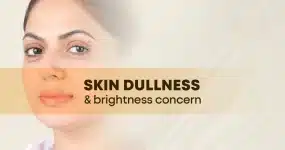
With the arrival of summer, clear skies and warm sun; life doesn’t come to a halt just because of the intense amount of heat and sun rays. Whether you are young or young at heart, it’s important to protect your skin from the sun’s rays during our daily outdoor activities. That’s because the sun carries ultraviolet (UV) radiation, which can cause skin cancer, hyperpigmentation, and early signs of photo-aging.
Sunblock vs. Sunscreen basics:
* Sunscreen works to screen or filter the skin from damaging UV rays. Sunscreen is usually white but is absorbed into the skin when applied and becomes transparent. Some have active ingredients like Oxybenzone and Avobenzone, etc; check to see if the sunscreen covers both UV-A and UV-B rays. Usually referred to as chemical sunscreen or organic chemicals.
* Sunblock physically blocks the sun’s UV rays from penetrating the skin, acting as a barrier. Sunblocks contain either Zinc Oxide or Titanium Dioxide and protect the skin against both UV-A and UV-B rays. Usually referred to as physical sunscreen or inorganic chemicals.
UV-A rays has a longer wavelength and is associated with aging.
UV-B rays have a shorter wavelength and are associated with skin burning.
UV-C rays also have a shorter wavelength and are completely blocked by the earth’s ozone layer.
What does SPF+ and PA+ mean?
Most skin cancers are caused by too much exposure to ultraviolet (UV) rays. The Sun Protection Factor (SPF+) on a sunscreen label is a measure of how well the sunscreen protects against UV rays, especially the UV-B rays. As the SPF value increases, sunburn protection increases. PA stands for Protection Grade of UV-A, so PA+ ratings measure a product’s ability to block UV-A rays.
Higher SPF numbers mean greater protection from UV-B rays (skin burning factor).
Higher PA+ ratings mean greater protection from UV-A rays (aging factor).
Look for Broad-Spectrum Coverage (protects against both UV-A & UV-B).
Usually SPF 30+ or higher is recommended for daily use.
* PA+= Some UV-A protection
* PA++= Moderate UV-A protection
* PA+++= High UV-A protection
* PA++++= Extremely High UV-A protection
How to Apply/Use Sunscreen
Even when people use sunscreen, they often don’t apply enough of it or don’t apply it correctly. This limits how useful it is. Follow these guidelines:
1. Apply about 2-3 fingers length amount for the face
2. Apply the sunscreen to dry skin about 15 to 30 minutes before going outdoors.
3. Reapply sunscreen at least every 2 hours, or more often after swimming or sweating.
4. Apply sunscreen to all areas of skin that will not be covered by clothing.
5. Protect your lips by applying a lip balm or lipstick that contains sunscreen with an SPF of 30 or higher.
Remember that children need protection from the sun, too. Sunscreens are recommended for everyone over 6 months of age.
Don’t Rely On Sunscreen Alone!
Using sunscreen when you are going out in the sun is important. But it is only one part of an overall plan to protect your skin from harmful UV rays. Other important ways to protect your skin include:
1. Seek shade when appropriate. Limit your sun exposure between 10 a.m. and 4 p.m., when UV rays are the strongest.
2. Wear a hat with a wide brim and clothing that covers most of your skin, as well as sunglasses.
3. Use an umbrella when necessary.
Presentation By:
Dr. Arthee Mohsina Alam
Medical Officer
Banani Branch
Recent Post
Interrelation between thyroid disorder and healthy lifestyle
- May 13, 2024
- 4 min read
পিসিওএস জনিত সমস্যায় খাদ্য নির্দেশনা
- May 12, 2024
- 1 min read
ALL ABOUT SUNSCREEN AND SUNBLOCKS: HOW TO
- May 2, 2024
- 3 min read
Summer Skin Care
- April 30, 2024
- 8 min read
সন্তানের নিরাপত্তা ও সুরক্ষায় সবসময় পাশে আছে
- April 30, 2024
- 1 min read
গরমে সুস্থ্যতার ডায়েট চার্ট
- April 29, 2024
- 1 min read
Categories
- Antiaging (6)
- Baby Care (1)
- Body Care (23)
- Breast Tightening (1)
- Customer Relationship (1)
- Dry Skin Care (1)
- Eye Care (2)
- Face Care (4)
- Food & Nutrition (21)
- Hair Care (7)
- Health and Wellness (5)
- Hyperpigmentation & Melasma Care (2)
- Lip Care (1)
- News & Events (19)
- Oily & Acne Skin Care (1)
- Skin Care (44)
- Skincare Tips (15)
- Smart Skin care & Life Style (6)
- Social (5)
- Sun Protection (5)
- Under Eye Dark Circle (1)
- Whitening & Brightening (4)


















No Comments